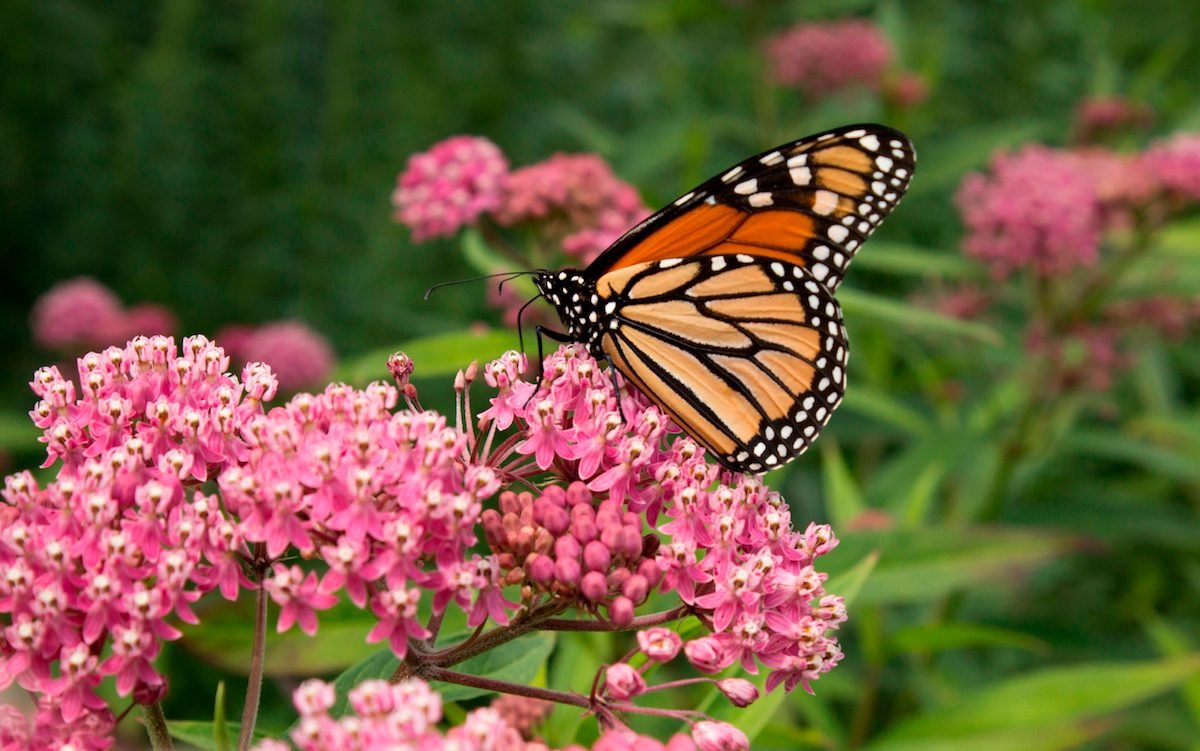The colorful Monarch butterflies have been placed on the International Union for the Conservation of Nature’s ‘red list” of threatened species.
Scientists blamed the monarchs’ plummeting numbers on habitat loss, climate change, and pesticide and herbicide use. Monarch butterflies play a vital role as pollinators in the ecosystem and food supply.
As a community, we can try to help by including plants like milkweed in our gardens and landscapes. Female monarchs prefer Swamp milkweed (Asclepias incarnata) and common milkweek (A. syriaca). Monarch caterpillars feed exclusively on the leaves of milkweed, the only host plant for this iconic butterfly species. As such, milkweed is critical for the survival of monarchs. Without it, they cannot complete their life cycle and their populations decline.
IMPORTANT: Make sure you plant the correct milkweed! Be very careful not to plant Tropical Milkweed (Asclepias curassavica) — which is actually a negative for Monarchs for a number of reasons, including disease transmission.
The Xerces Society website explains it all here: https://xerces.org/blog/tropical-milkweed-a-no-grow.
Tropical Milkweed, which is not native to the United States, is the variety most often available in nurseries, so people often buy it and plant it, trying to do something good for Monarchs, and unknowingly cause harm instead!


Comments are closed.